The HTC One M9 Review: Part 1
by Joshua Ho on March 22, 2015 7:00 PM EST- Posted in
- Smartphones
- HTC
- Qualcomm
- Mobile
- Snapdragon 810
- One M9
GPU Performance
Although CPU is often the focus of any given SoC, it’s important to avoid using a weak GPU as even cases as simple as web browsing or navigating through a UI can rely on the GPU for rendering, in addition to the common use cases of gaming. It’s also possible that GPUs can be leveraged for compute, which has great use for cases like image and video processing. To this end, the Snapdragon 810 has an Adreno 430 GPU that runs at 600 MHz, similar to the Snapdragon 805’s Adreno 420. As a result, all of the improvements we’re seeing from the Adreno 420 to the Adreno 430 are solely the result of architecture and driver improvements rather than clock speed increases.
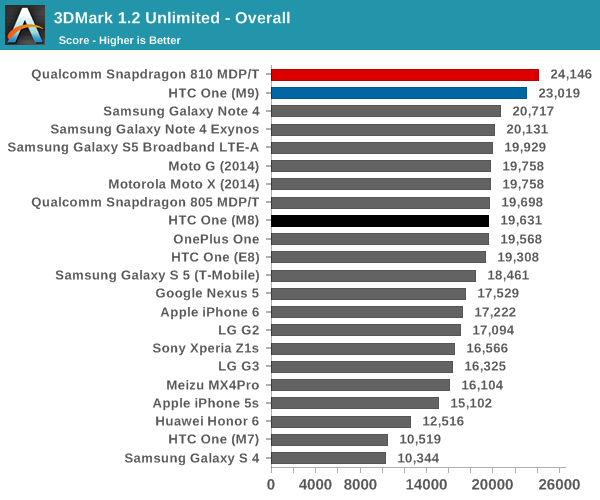

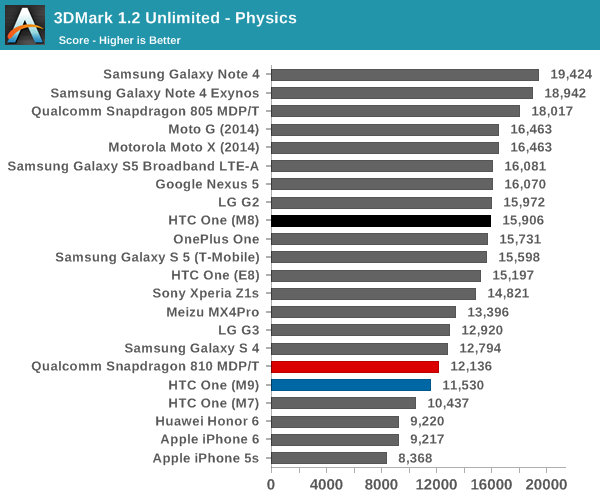
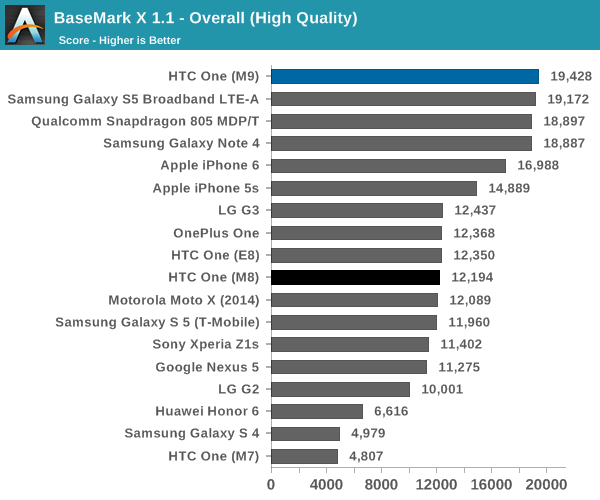
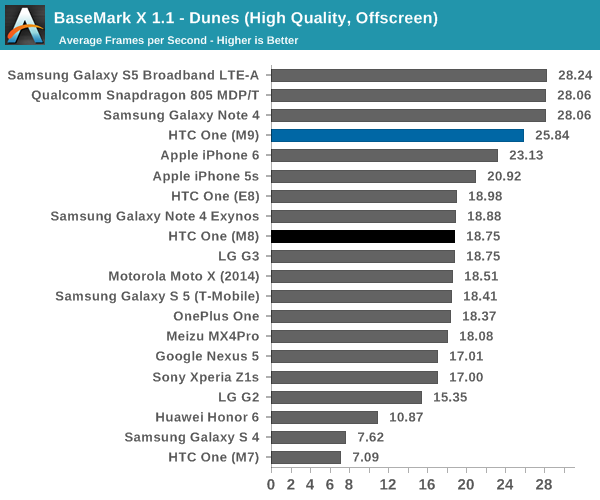
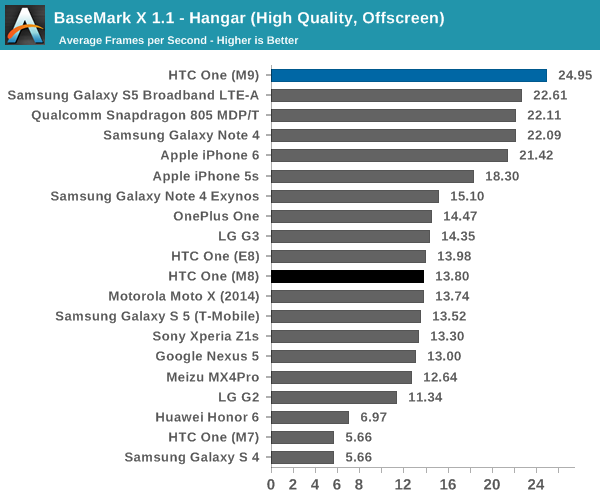

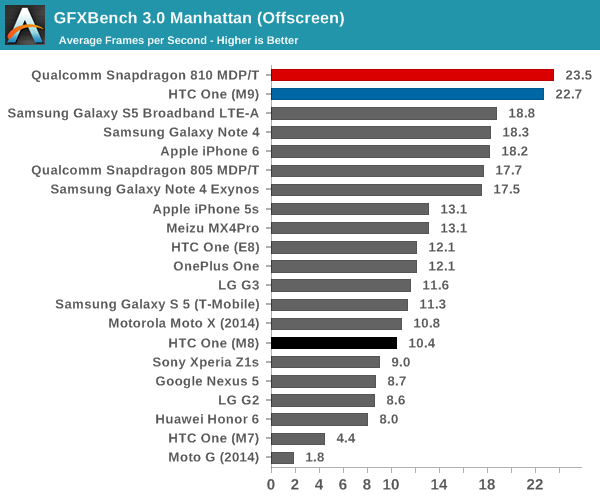
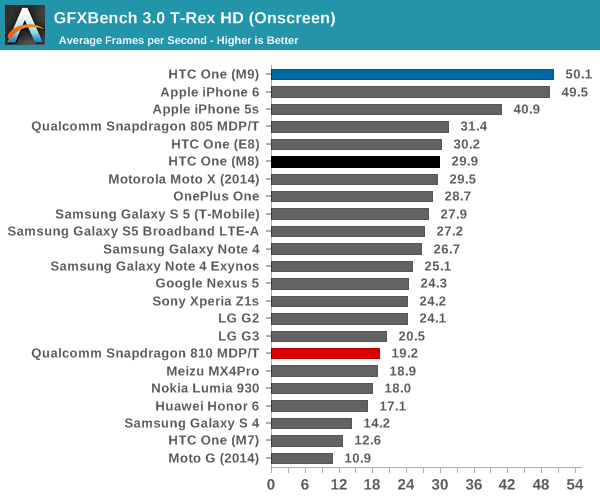
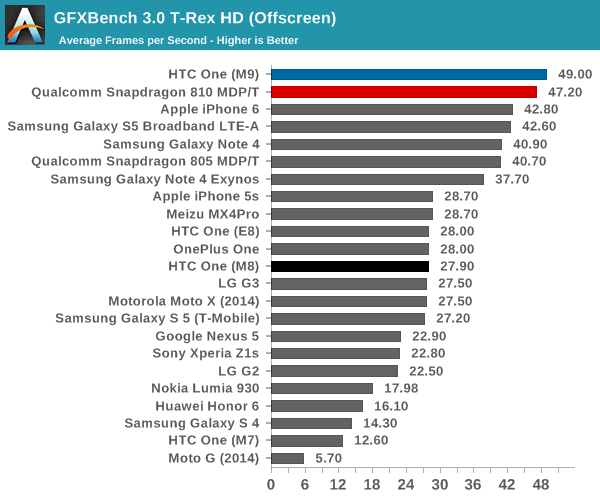
As one can see, the One M9 manages to deliver results that basically mirror what we saw with Qualcomm’s MDP/T, although there is some variance that can be seen. HTC did make the right call here with the 1080p display as we see a pretty massive jump in performance from the One M8 to the One M9 in GPU performance, and using a 1440p display would have eaten away most of these gains. I suspect that the hit to GPU performance with 1440p displays will be mostly compensated for by the next generation of SoCs, but for now I’m still not sure that it makes sense to push such a resolution on a phone.
NAND Performance
Storage performance is often an unnoticed aspect of any device, but it can often force itself to the foreground when it’s insufficient. Probably the most famous case of this is the Nexus 7 (2012), which was really the first device that caused people to start to look closer at NAND performance. While we’re close to a better solution for storage testing, for now we can still look at Androbench to get a decent idea of relative storage performance, although this is nowhere near as extensive as our SSD testing.
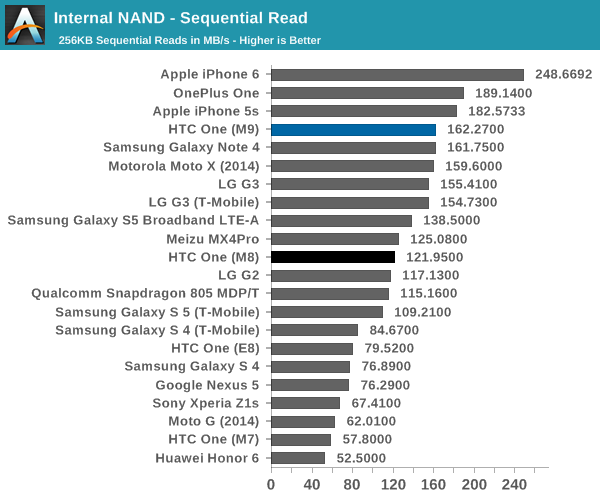
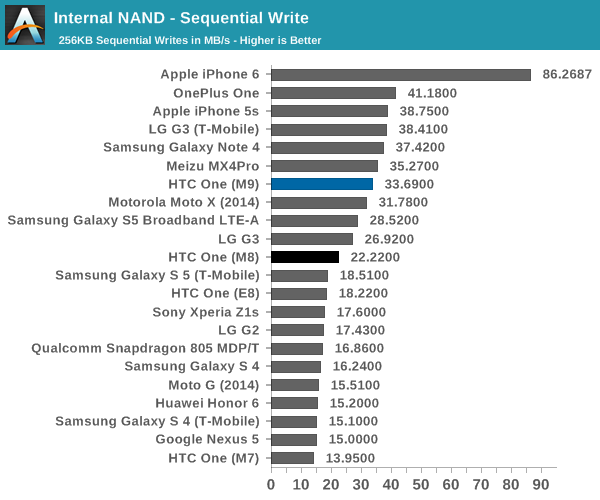
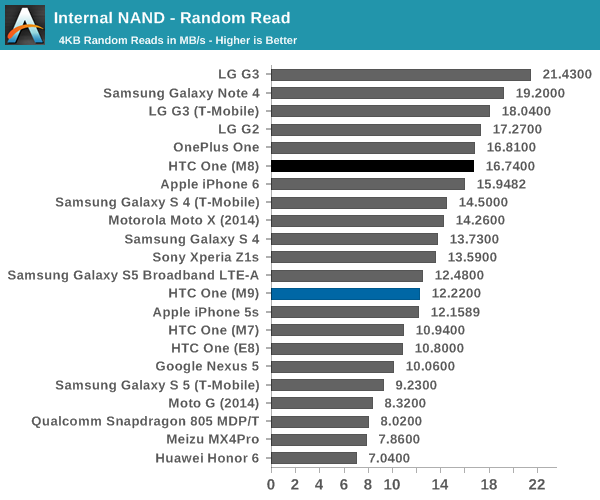
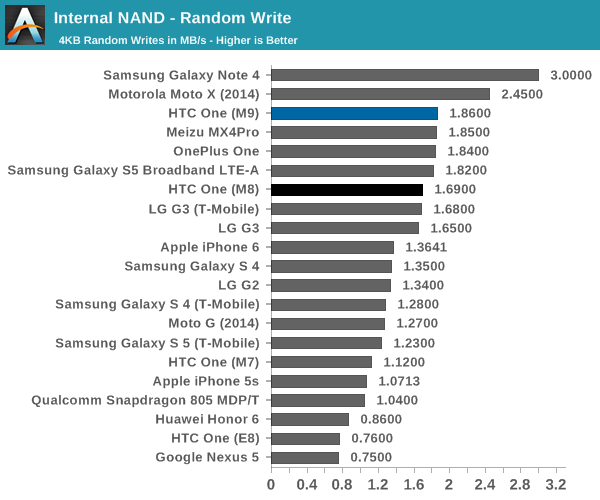
In this test, HTC does show some level of improvement over the previous generation but does regress a bit in the random read department. As far as I can tell, HTC is using Samsung’s eMMC solution here, with the model name BGND3R, as opposed to the One M8 which used a SanDisk eMMC IC. It's interesting to see how the One M9 still uses ext4 here, even though the Nexus 9 adopted F2FS. As far as I can tell, there seems to be a reason to adopting one filesystem over another but this reason is still unclear to me.










132 Comments
View All Comments
Midwayman - Tuesday, March 24, 2015 - link
Seems I'd rather have an M8. Phones are 'good enough' power wise unless you're a big gamer and have been there for a couple years. Battery life improvements are what I really care about and they keep either throwing away any improvement to drive WQHD or 4k screens (who cares?) or are outright regressing like this one. Sad.Demi9OD - Tuesday, March 24, 2015 - link
Let's not forget HTC has always been pretty friendly to the dev community. Unlock-able boot loader matters. While I realize not everyone will go that route, being able to run Xposed, Greenify, and Amplify on my AT&T M8 has improved battery life so much that I really cannot see upgrading to a device without the ability to root. If the M9's battery problems can be solved with software, I'd consider it a non-issue. The screen however can probably not be forgiven, and the only reason to upgrade from an M8 would be the camera, which from initial reports is better, but not in the same league as the S6 or iPhone 6.Belse - Tuesday, March 24, 2015 - link
I wish they could just release a M7 with increased resolution and up-to-date internals.Siddharth Kapoor - Wednesday, March 25, 2015 - link
Dear AnandTech,3DMark Physics Test is a CPU Stress Test. Do you have any good reason to include it in GPU Performance section? The description for Physics Test on FutureMark's site states:
"The Physics test is a pure CPU performance benchmark using lightweight rendering techniques to minimise any GPU impact on scoring. The test contains a multi-theaded simulation of a large number of rigid bodies, some connected with joints, colliding using the Bullet Open Source Physics Library."
bhtalia - Wednesday, March 25, 2015 - link
This review makes me appreciate my One Plus.Refuge - Wednesday, April 1, 2015 - link
God I loved that phone, I still miss it sometimes. Great phone, great everything.I have the ONE M7 now, and I won't be upgrading this year I can assure you that...
Gunbuster - Wednesday, March 25, 2015 - link
It seems China is getting a version with a different SOC, fingerprint reader, different screen, and non fugly camera porthole. http://www.engadget.com/2015/03/25/htc-m9-plus-lea...Notmyusualid - Thursday, March 26, 2015 - link
Wow!Are those physical buttons, or screen buttons, it is not clear to me...
If physical, I don't mind importing a handset AT ALL. Balls to what our carriers offer... I usually buy cash, and not on contract anyway...
random2 - Friday, March 27, 2015 - link
I really need a banana for reference in these pictures as I suspect the hands used may be smaller than normal.rubyonrails3 - Thursday, April 2, 2015 - link
Why its part 1? is anything more coming?